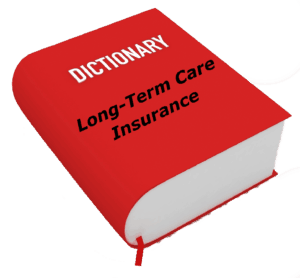Part 4: “Savvy Consumers? More half-truths in the New York Times article on long-term care insurance
Savvy Consumers? More half-truths in the New York Times article on long-term care insurance
After decrying that a 91-year old’s policy will not pay for home health aides, The NY Times starts their article with Half Truth #3:
“The private insurance market has proved wildly inadequate in providing financial security for most of the millions of older Americans who might need home health aides, assisted living or other types of assistance with daily living.”
The implication is that the policies are bad. But then, halfway through their article, the Times makes this statement:
“Industry officials also failed to account for the behavior of savvy consumers determined to keep their long-term care coverage.”
Savvy consumers? What is the Times talking about?
Why would someone who is determined to keep their long-term care coverage be called “savvy” by the Times? Aren’t these policies “wildly inadequate”? How can the NY Times make both statements in the same article and say that both statements are true? Both statements are half-true.
You can’t understand the whole picture until you understand what the the New York Times article on long-term care insurance left unsaid, namely this:
The reason “the private insurance market has proved wildly inadequate” is NOT because the policies are bad. It’s because most people do NOT purchase long-term care insurance.
According to the most recent industry survey, only 7 million people own long-term care insurance in the U.S.
According to KFF.org (who partnered with the NY Times to publish this poorly researched article) “In 2020, Medicaid paid 54% of the over $400 billion spent on (long-term care services) in the U.S., people paid an additional 13% out-of-pocket, private insurance paid 8%…
https://www.kff.org/medicaid/issue-brief/10-things-about-long-term-services-and-supports-ltss/
If the private long-term care insurance industry had only 7 million policyholders, and the industry paid 8% of long-term care expenses in the U.S. in 2020, how much would the long-term care insurance industry have paid if there were 70 million policyholders? The math is pretty simple.
In 2020, if there were 70 million long-term care insurance policyholders, the private long-term care insurance industry would likely have covered about 80% of the long-term care expenditures in this country.
The Times is right… well, at least half-right. “The private insurance market has proved wildly inadequate in providing financial security for most of the millions of older Americans” because only 7 million people own policies. If tens of millions of consumers owned long-term care insurance, the private insurance market would be covering more people for long-term care than Medicaid.
As I stated in Part Two of this series, long-term care insurance policies sold before 1993 were, by and large, HORRIBLE. Policies purchased after 1993 were much better. Policies purchased after 1997 were even better. Policies purchased after the Rate Stability Regulation took effect (in 41 states) are even better. And policies that qualify for Long-Term Care Partnership Programs are the best of all (especially for the middle-class).
Instead of writing just a half-truth, the the New York Times article on long-term care insurance should have written the whole truth. It would have sounded like this:
“It’s not that modern long-term care insurance is bad. The modern policies (those purchased after 1997) are great policies with a lot of consumer protections. The main problem with long-term care insurance is that not enough people have purchased policies.”
In Part 5 of our in-depth analysis of the New York Times long-term care insurance article, we’ll discuss the four things the NY Times got right.


